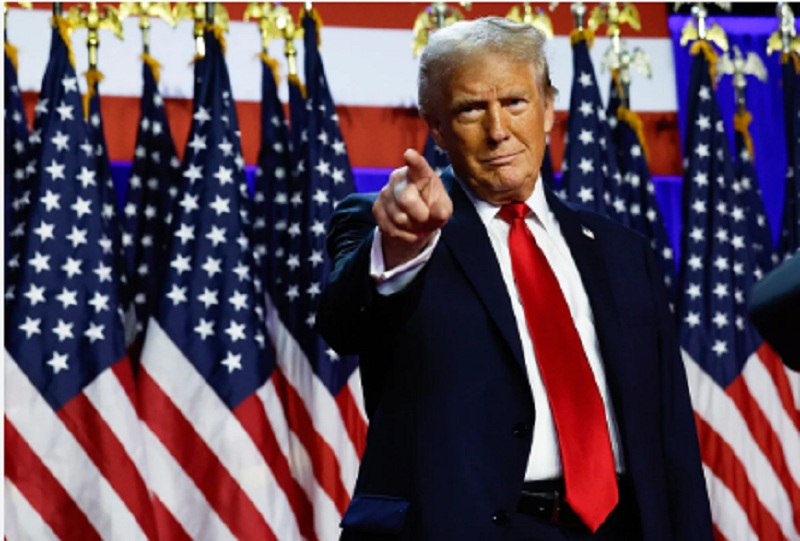By Phoebe Koundouri, Konstantinos Dellis
& Anni Triantafyllidou
The recent surge of tariffs imposed by the U.S. under President Donald Trump has altered the global trade landscape. This policy, intended to rectify perceived imbalances and revitalise the American economy, represents a high-stakes gamble with significant economic and social consequences for both the American and global economy.
The Trump administration’s strategy, framed by the “Make America Great and Safe Again” agenda, aims to revitalise traditional industries, create domestic jobs, and stimulate demand for American-made goods.
Tariffs are central to this approach, seen as a necessary tool given the perceived limitations of conventional economic measures like tax cuts and infrastructure spending. The goal is to reassert U.S. economic leadership. Yet, this “reciprocal justice” strategy, blind to intricate economic realities and interconnected supply chains, has already unleashed negative supply shocks, inflated consumer costs, and provoked retaliatory tariffs.
Perceived trade disadvantage
At the heart of the administration’s policy is the belief that the U.S. faced an unfair disadvantage in global trade, particularly vis-a-vis key partners like Europe and Japan. Beyond simple tariff disparities, the administration highlighted complex non-tariff barriers: regulatory hurdles, targeted subsidies, industrial policies, and alleged currency manipulation.
Trade dynamics with the European Union illustrate this perceived imbalance. While average EU tariffs may appear moderate, critical sectors like automotive exports face higher barriers. For example, the EU imposes a 10 percent tariff on imported cars, compared to the U.S. rate of 2.5percent. Agricultural exports to the EU, including meat, dairy, and sugar, also face significant tariffs and strict regulatory controls.
Less visible non-tariff barriers in the form of state subsidies, currency manipulation, and red tape at the border and safety and regulatory requirements, complicate U.S. market access and are frequent subjects of World Trade Organization (WTO) disputes.
The method used to set new tariff levels drew significant criticism. Departing from traditional trade metrics, the administration adopted a principle of “reciprocal justice.” This approach calculated a country’s “trade disadvantage”—the trade deficit as a percentage of total imports—and set tariffs at roughly half that figure.
While seemingly simple, this ad hoc method lacks theoretical rigour and fails to account for deeper structural differences between economies and the realities of global supply chains.
Economic consequences
Economically, tariffs act as a negative supply shock, raising input costs for domestic producers reliant on imported materials. Sectors from food production to electronics manufacturing faced rising costs, impacting consumer prices and demand. Industries embedded in international supply chains are particularly vulnerable to the price increases in traded intermediate goods. Depending on the cost and competition structure of individual sectors and attributes of consumer demand, this supply disruption most often leads to price increases for final consumers.
The elasticity of demand plays a crucial role in shaping the effects. Where domestic substitutes are limited, consumers bear the brunt of higher prices, squeezing real incomes and purchasing power, particularly among low-income households. Producers, facing higher costs, could either absorb losses or pass the increases on to consumers, fueling inflation and potential wage-price spirals.
Globally, the risks are expected to be amplified as retaliatory tariffs from affected countries will disrupt supply chains and cross-border investment flows.
Major European exporter Germany revised its 2025 economic growth forecast to zero from a previously anticipated 0.3 percent increase in GDP. Germany’s economy had already contracted by 0.2 percent in 2024 and 0.3 percent in 2023, marking its longest slump since World War II, exacerbated by ongoing trade tensions and slowing Chinese demand.
Sector-specific impacts: The auto industry
The 25 percent tariff on imported vehicles, intended to bolster U.S. auto manufacturing, threatened to raise car prices and limit consumer choice, hurting low and middle-income households—a key segment of Trump’s political base.
Trade deficits, such as the European Union’s almost US $200 billion goods surplus with the U.S. in 2024, are not inherently a sign of unfair trade practices. Economists stress that these imbalances often stem from domestic economic choices rather than external manipulation.
If the administration’s aim was to close the trade deficit, it needed to address domestic factors, such as limiting the public sector deficit and encouraging increased savings by citizens.
Limited impact on US consumers
U.S. households are relatively less dependent on imported goods compared to other major economies. Only about 10 percent of U.S. consumer spending is directed toward imported products. In contrast, household consumption accounts for a higher share of GDP in China (approx. 39 percent in 2023) and the European Union (around 52 percent in 2023).
However, the escalating U.S.-China trade confrontation underscores the dangers of unchecked escalation, with both sides risking price surges and currency devaluations. While mutual economic pain could eventually force compromise, the damage in the interim could be substantial.
While the administration’s goals of job creation and economic revitalisation were understandable, the broad use of tariffs introduced severe risks across economic and social fronts.
A measured, multilateral strategy, prioritising long-term stability and cooperation, would better serve both American and global interests in an increasingly interdependent world.
Professor Dr. Phoebe Koundouri, Athens University of Economics and Business & Technical University of Denmark, is President World Council of Environmental and Natural Resource Economists Associations, Chair SDSN Global Climate Hub, Director AE4RIA and Director Sustainable Development Unit ATHENA Research Center.
Dr. Konstantinos Dellis, Athens University of Economics and Business.
Dr. Anni Triantafyllidou, Athens University of Economics and Business.
Originally published under Creative Commons by 360info™.















